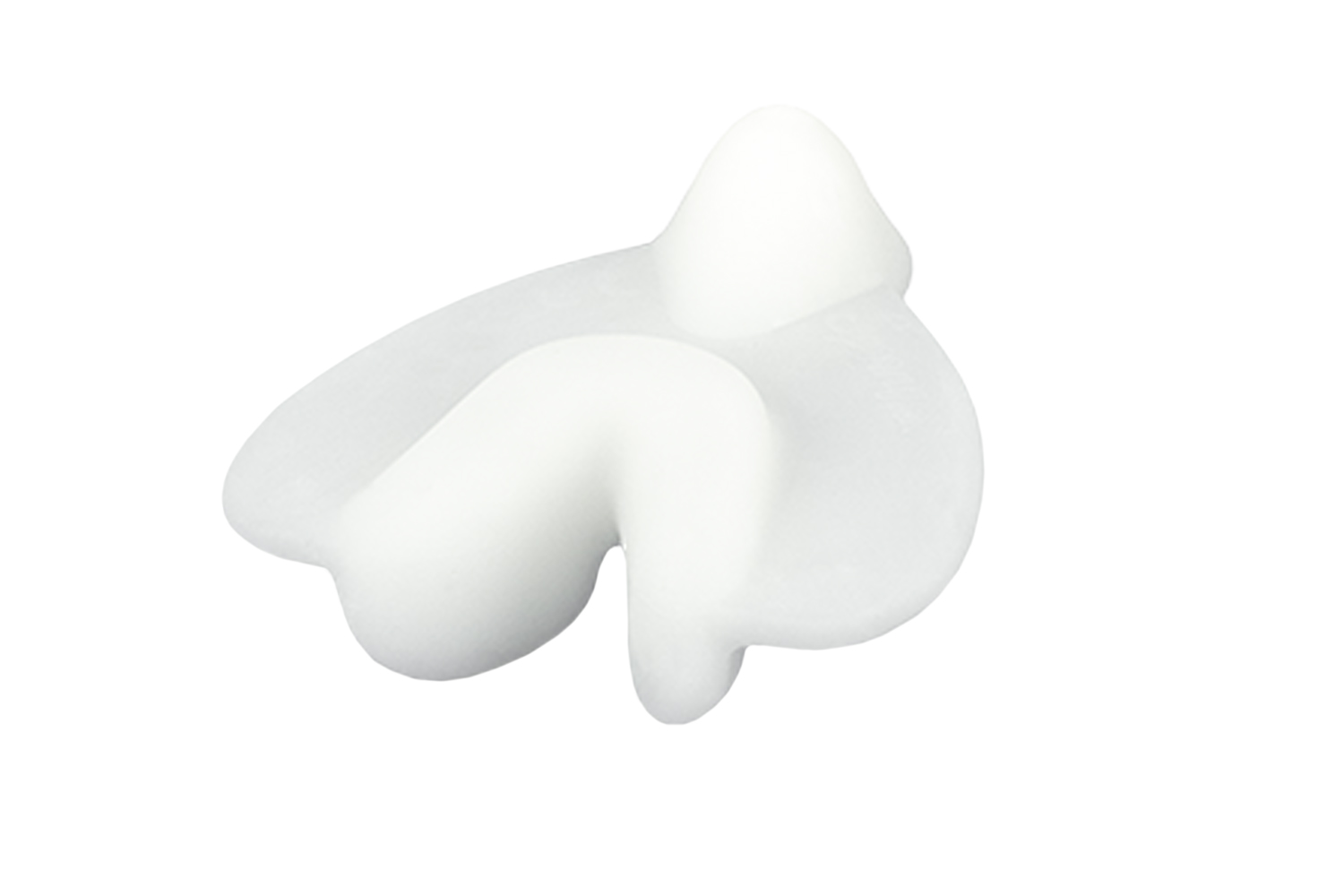Your store for temporomandibular joint dysfunction (TMD)
Why order from Dentrade?
treatment of TMD
Worldwide shipping
Relief of head, jaw and neck pain
Cooperation with leading TMD experts
RehaSplint – The First Aid Splint
The relaxation splint for the diagnosis of TMD syndrome
The RehaSplint is a splint for TMD complaints. As a first aid splint the RehaSplint is suitable for almost all patients especially for those who suffer from tension headaches, back and shoulder pain. The easy use allows you to adjust the prefabricated bite splint yourself.
Coordinative training with the RehaBite for TMD complaints
The physiotherapeutic training device with biofeedback against muscle tension in the temporomandibular joint
The oral workout to activate the self-healing capacities. The RehaBite can be used as an alternative or addition to the occlusal splint for longterm pain reduction. The RehaBite is an innovative training device for home treatment and rehabilitation of muscle pain in the masticatory system.

Spoony Gloss - Corrects Lingual Posture
The splint with a triple effect for the treatment of swallowing disorders
Spoony Gloss is a new ready to use splint for treating myofunctional disorders and swallowing difficulties. The physiological design of the splint is suitable for almost all patients and ages.
If left untreated, a poorly positioned tongue can lead to health consequences such as breathing through mouth, tongue protrusion and/or speech disorders.
Just four steps to your instant help splint
Select item
Choose from different payment options
Daily shipping
Treatment of TMD
What our customers say:
Convince yourself of the satisfaction of our customers.
Dentrade - A family business rich in tradition
Benefit from over 30 years of experience and innovation in TMD research
Benefit from over 30 years of experience and innovation in TMD research
Headaches, back pain and teeth grinding can almost be called as common diseases.
Based on this motivation, the company strives for a therapeutic approach for sustainable pain reduction with continuous further development.

The most important questions & answers
Both the Aqualizer and the RehaSplint are short-term diagnostic splints used for initial treatment of CMD complaints. The Aqualizer is a hydrostatic bite block: Both sides are filled by a fluid designed to balance the jaw.
In contrast, the RehaSplint is an elastomer – a softer splint made of flexible, biocompatible plastic without plasticizers. The very pleasant mouth feel of the thermoplastic in the RehaSplint and the rounded corners give it a good tactile feel and make it very comfortable in the mouth even over longer periods of wear.
You can adapt both splints individually to your needs. The RehaSplint offers three different hardness levels for this purpose. With the Aqualizer, you can choose between different water levels. The Aqualizer adapts to the shape of your mouth by wearing it. The RehaSplint, on the other hand, already has preformed bite pads and is therefore in a predefined rounded shape for the jaw right from the start.
In addition to severe tension in the head, jaw and neck muscles, the following symptoms are typical:
- Abrasion of tooth enamel
- Lesions in the enamel – Wedge-shaped defects in the enamel are often found on the necks of the teeth.
- Tongue indentations – The tongue is typically used as a “substitute splint” by gritters and pressers (Tongue indentations on the sides and front can be signs of a parafunctional disorder).
On top of indentations on the tongue, it is common to find indentations on the cheeks. Scarred areas on the cheeks may be an indication of occasional pressing
The RehaSplint is available in:
- Soft (≈40 Shore A)
- Medium (≈50 Shore A)
- Hard (≈60 Shore A)
hardness to cover several physiological conditions. There are controversial discussions about the hardnesses of splints.
To avoid lasting damage to the tooth structure, as well as to reduce pain, hard and soft TMD splints are equally suitable. There is a consensus among experts that the effectiveness of hard splints in bruximus is predominant. However, practical experience has shown that patients tend to prefer somewhat softer splints, as they are significantly more comfortable to wear.
Soft splints may encourage patients who already have a tendency to bruxism to increase clenching or grinding. If it feels like gummy bears or chewing gum, you should change from soft to medium or hard.
Many patients have been observed to suffer from both daytime and nighttime bruxism. Also known as awake bruxism and sleep bruxism. Certain oral habits or parafunction can be identified as signs of jaw malocclusion.
Common oral habits include teeth grinding, lip and cheek biting, thumb sucking, fingernail biting, and chewing on pens. If oral habits occur more frequently in the form of awake bruxism, it makes sense to wear the occlusal splint as often as possible during the day. If the patient feels comfortable with a relaxation splint during the day, this can also be used during the day.
The splint is essential during nighttime bruxism to protect the tooth structure and the temporomandibular joints from damage caused by pressing and grinding. The duration of wear is always individual and should be coordinated with the patient's treating physician.






